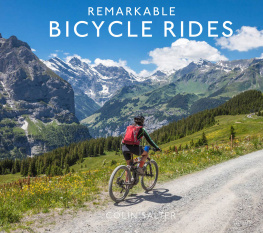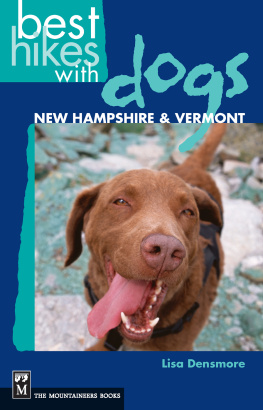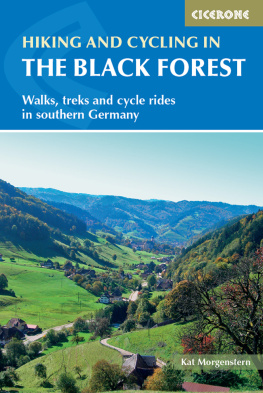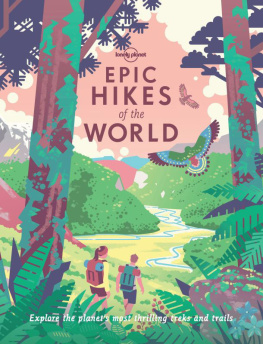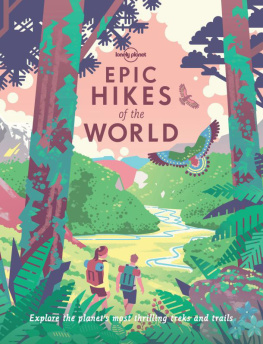Contents
Guide
Pavilion Books
An imprint of HarperCollinsPublishers Ltd
1 London Bridge Street
London SE1 9GF
First published in Great Britain by Pavilion Books
An imprint of HarperCollinsPublishers Ltd 2023
Text Copyright Pavilion Books
All photos Alamy except where noted
Hardback ISBN: 9781911682592
eBook ISBN: 9781911670254
Version date: 2023-03-27
All rights reserved. No part of this publication may be reproduced, stored in a retrieval system, or transmitted, in any form or by any means, electronic, mechanical, photocopying, recording or otherwise, without the prior permission of the publishers.
This ebook contains the following accessibility features which, if supported by your device, can be accessed via your ereader/accessibility settings:
- Change of font size and line height
- Change of background and font colours
- Change of font
- Change justification
- Text to speech
- Page numbers taken from the following print edition: ISBN 9781911670254
Contents
Milo Weiler/Unsplash
Travel broadens the mind, but whats the hurry? The faster you travel, the less time there is to absorb the world through which you are travelling. Its not just the sights that are missed at speed, but all the other unique sensory delights of a place the smell of a spice market, the sound and feel of snow beneath the boots, the splash of water from a waterfall during a hot summer hike.
This is the third in a series of travel books which round up the very best of long-distance routes for the dedicated traveller someone for whom the journey is far more important than the destination. After Remarkable Road Trips and Remarkable Bicycle Rides, Remarkable Treks offers more than fifty walking routes which strip away all barriers between the voyager and the voyage. This is slow travel, on trails all around the world from the shores of Europe to the base camp of Mount Everest.
Walking as a leisure activity has a relatively short history. It coincides with the start of the Romantic movement in music, art and literature. The new-found delight in natural sights, sounds and emotions encouraged people to get out into the country and tune in to nature. Walking is part of the history of the European spa resort, to which eighteenth- and nineteenth-century doctors sent their wealthy patients for a rest cure.
As people retreated to resorts for the good of their health, they found themselves with time on their hands; theres only so much bathing or drinking of mineral waters that one can do. Walking was the answer. It broke the monotony and really was a healthy activity. Country and mountain resorts could legitimately promote walks as a benefit of their locations; and their patients acquired a taste for it which they could pursue even after theyd been cured of their ailments.
Pure mountain air is still part of the attraction for todays hikers, and Remarkable Treks includes many alpine trails including circuits around the great peaks of Mont Blanc and the Matterhorn. Classic routes in the Swiss Alps, the Pyrenees and the Dolomites now compete with newly developed paths in the Atlas Mountains of Morocco, the Andes, the foothills of the Himalayas and on Mount Kilimanjaro in Tanzania the latter an often under-estimated challenge for charity walkers unaware that it is not only the highest mountain on the African continent but the tallest free-standing peak in the world.
Geography presents challenges on a map that the dedicated trekker is driven to attempt on the ground. Just as the mountaineer George Mallory replied, when asked why he wanted to climb Mount Everest Because its there so todays walkers tackle the Pennine Way along Englands undulating spine of hills because its there. It doesnt go anywhere: its start and end points are two of the smallest villages in Britain. Similar explorers choose to walk the entire length of New Zealand just because they can.
That route, Te Araroa, clocks in at 3,000km, putting it in the top three of routes by length in this book, just shorter than the Appalachian Trail near the east coast of the US and a long way behind the Pacific Crest trail in the west. These super-routes require not only a high level of fitness but lots of time and organization. Even hikers who complete them in shorter sections over years will have devoted many months of their lives to the project, overcoming the challenges of accommodation and re-supply. The reward is the experience of being somewhere that could not have been reached any other way but on foot.
Throughout this book the units of measurement reflect local usage kilometres in New Zealand, miles in the US, for example. But its not all about length either. The same sense of being somewhere only accessible on foot awaits walkers on the shortest route in Remarkable Treks, through the Samaria Gorge in Crete. Its the only trail measured here in hours rather than days in places it is less than four metres wide and up to a thousand metres deep, and although it can be walked in a day, the rugged terrain and dramatic geology make it eligible for inclusion in Remarkable Treks.

There are many fabulous short walks in the Faroe Islands, including one to the village of Gjgv on Eysturoy island.
Our cover image shows a hiker looking down on Funningur fjord from Funningur top on Eysturoy Island. The Faroe Islands, is an emerging destination for serious hikers, with a series of short spectacular trails (Visitfaroeislands.com) on seven islands. The route from Funningur to Eii is just 6.5km and from Funningur to Svnir 8km, and both should take three hours or less. It cannot be long before some enterprising islander creates a longer-distance Faroes Trail to match those in Scotland, Iceland and New Zealand.

Tenby harbour on the Pembrokeshire Coast Path.
Beata Mitrega/Unsplash
As well as visiting places where no human has settled, long-distance walks can lead to places long abandoned. Treks to Machu Picchu in Peru and the lost city of Teyuna in Colombia are two popular South American examples. In the Middle East the sandstone edifices of Petra in Jordan inspire awe; and on the now underpopulated southern shores of Turkey, the Lycian Way walks through a bustling ancient Greek past of lost ports and temples.
Everywhere has a past very different from ones homeland, and a different geology too. Icelands landscape, one of the youngest in the world, continues to be shaped by its very present volcanic depths. A walk across its interior, over soil which is sometimes less than a thousand years old, encounters otherworldly forms and flora like nowhere else. The sub-tundra Kungsleden trail in northern Sweden is as alien to some as the seaside of the Welsh coastal path is to others. The scrubby depths of the Grand Canyon are the very opposite of the remarkable forests along the gentle Bibbulmun Trail in Western Australia.

The South West Coastal Path passes Bossington Beach and Porlock Marsh.



